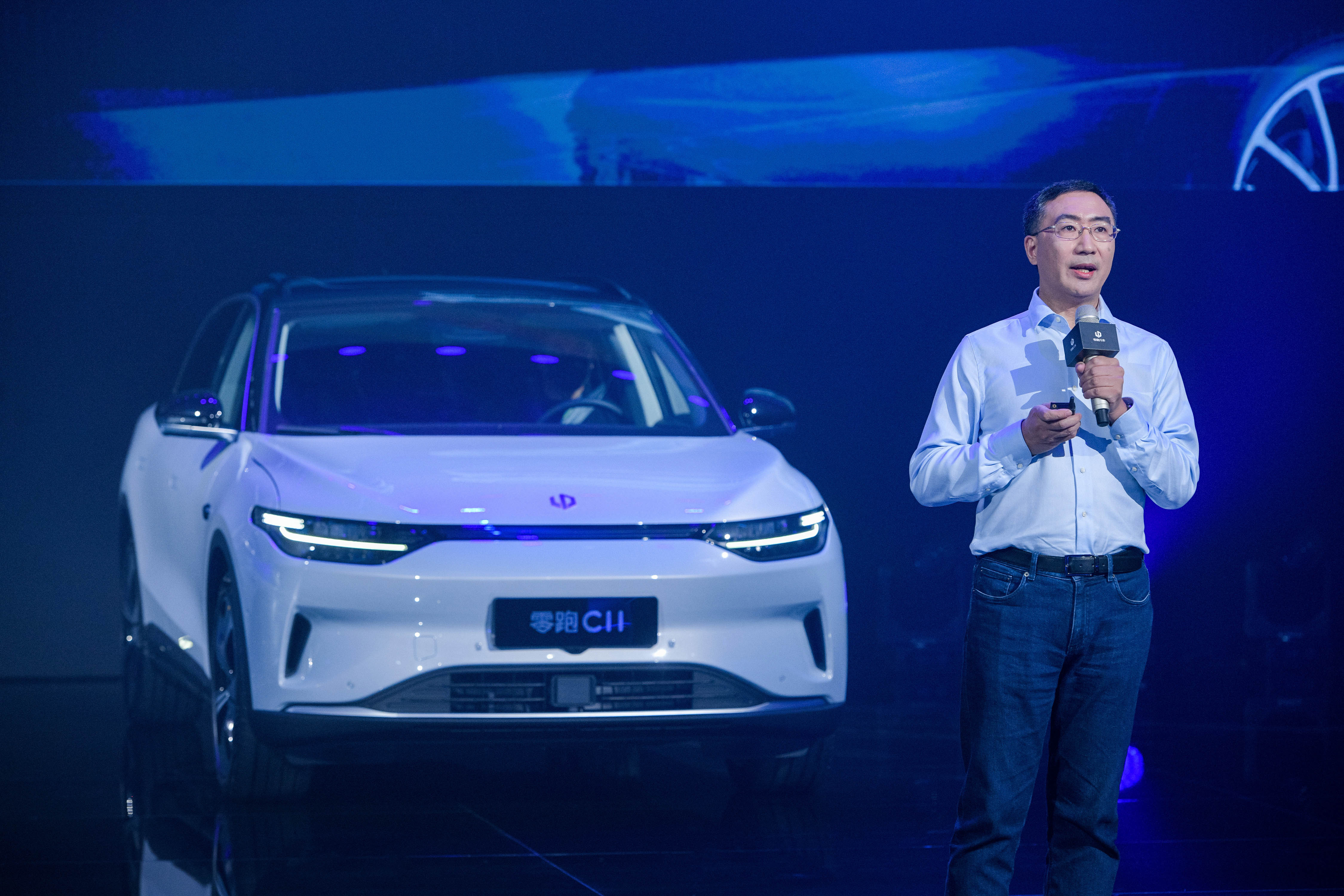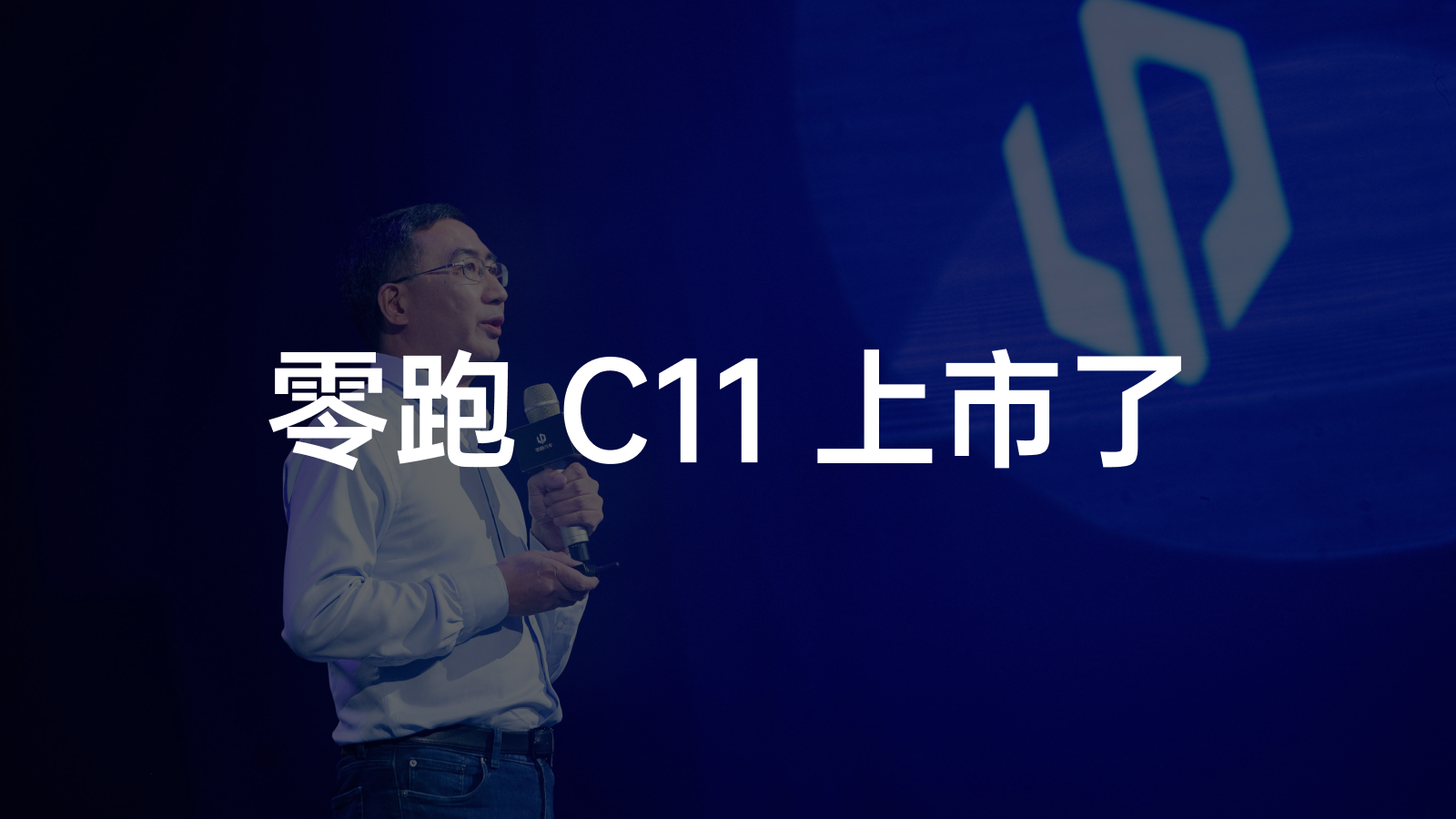Zero Run CEO Zhu Jiangming’s Interview Summary

About C11
Q: Why is Zero Run C11’s ADAS still not leading despite Dahua’s strong AI technology?
A: We use domestically produced chips, and there is a mature process from the bottom-level driving software to the ADAS algorithm. There are also some reasons of our own, which may delay the time a little bit, but our system is entirely self-developed.
Q: What is C11’s competitor?
A: C11 has no competitors. We have our positioning, our brand, and we aim to produce good cars that ordinary people can afford. There are no competitors for this.
Q: Will C11 use lithium iron phosphate batteries?
A: In the future, C11 will use lithium iron phosphate batteries in the luxury version with a range of 510 km, which have better cost-effectiveness and safety.
Q: What is the most popular configuration version of C11 in current orders?
A: Currently, the orders for the flagship version make up about 50%, while the luxury version and the performance version each account for 25%. Optional packages account for about 70%-80% of the orders.
Q: After the launch of C11, some users reported that the standard for miscellaneous fees collection is not uniform. How will you manage it in the future?
A: We have already held an emergency meeting today, and all dealers will coordinate to reach a unified standard. We will try our best to achieve a uniform standard for services like handling license plates that satisfy our customers.
Q: What is the proportion of T03 users among current C11 orders?
A: The proportion of T03 users in C11 orders is about 10%, mainly for additional purchases.
Q: What is the expected performance of C11 in the early delivery?
A: Our goal for C11 this year is to strive for more than 6,000 units.
About Self-Research
Q: What are the advantages of full-stack self-research that it can bring to us?
A: The advantages of our self-research are mainly quality control and cost control. For instance, the seats and car machines, the most important thing is to connect the communications between controllers. If we don’t develop them ourselves and instead purchase from others, the difficulty will be much greater, and it will be hard to control quality experience and cost.## Why insist on self-research and development?
Zhu Jiangming: Take lamps as an example. The profit margin of purchased ones is between 15% and 20%. The self-developed lamps for C11 bikes can save 600 yuan. Once it scales up, the advantages will be very obvious.
Will battery cells be self-developed?
Zhu Jiangming: Battery cells are standard parts and do not need to be made by us. We are more inclined towards intelligent development.
Will self-developed chips be iterated?
Zhu Jiangming: Currently, the chips are jointly developed with Dahua and can meet the demand for Dahua’s AI devices and L2-level ADAS. In the future, we will purchase third-party hardware platforms for L4-level ADAS. The procurement is already underway.
Will automated assisted driving shift to pure visual direction?
Zhu Jiangming: The more integration, the more difficult it becomes unless the sensors are already reliable since this is an AND gate relationship. At this stage, the maturity of lidar is lower than that of millimeter-wave radar. However, Dahua has been researching vision since 1992, and these technologies can be inherited. So, in terms of our accumulation and potential capabilities, we are competitive with Tesla. I have full confidence in this.
About LI
Is reaching the 800,000 sales target by 2025 a life or death situation?
Zhu Jiangming: Actually, it is not. Perhaps we can survive by selling 500,000 units, but we still need to strive for the goal of 800,000 units.
How will the financing of over 8.8 billion be allocated?
Zhu Jiangming: We mainly use the financing to build factories, research and development, and market development. If we want to have a production capacity of 800,000 units, we need at least two to three factories. Jinhua factory will expand in the second half of the year and can produce up to 240,000 units next year. In the future, we need to invest more in making intelligent driving our core competitiveness and building a higher computing power platform through high-quality autonomous data acquisition.
How is the IPO progressing?
Zhu Jiangming: Our target is next year.
What is LI’s user strategy?
Zhu Jiangming: This year, we established a user operation department as a first-level department of the company, and it is still under construction. Regarding user operations, we have several levels. First, how to make our real products and services better. This is fundamental. Second, how to help users use products better. Third, establish communication platforms to enrich users’ lives in addition to their use of the cars. Fourth, build a co-building and sharing platform to share good products from users through LI certification with everyone.
Will LI build a charging system in the future?##朱江明:
I always believe that charging is a social issue, not one that a single car company can solve. Because it requires connectivity and more resources, including government support. Charging is a two-way energy management system, which cannot be done well by a single car company, so we currently have no plans to build it.
Question: Would you mind introducing our sales channel plan?
朱江明: At present, there are 174 operating outlets and 73 under construction. Among them, there are 21 directly operated stores, mainly located in first-tier cities. At the same time, we will also have a large number of image stores in supermarkets, mainly to display products and brand images. By the end of this year, we expect to have more than 270 image stores, with the first image store located in Wuxi.
Question: Will the navigation system adopt a subscription model?
朱江明: This is still being evaluated for the final form.
Final Thoughts
Like Tesla, Zero Run, which insists on a pure visual solution, still chooses to put lidar on the car first in 2023. From Zhu Jiangming’s point of view, he personally prefers a visual solution rather than multiple sensor fusion. This is not difficult to understand, after all, backed by Dahua’s many years of efforts have already made a great achievement in image recognition and has very rich experience in visual algorithms. The reason why Zero Run does not currently carry a full visual solution but chooses to use lidar for fusion is mainly because there are too few Zero Run cars on the road, and there is a lack of real-world road experience accumulation, so the use of lidar as redundancy to ensure safety is chosen.
The advantage of being backed by Dahua is that it can share the cost of chip research and development with Dahua. Zero Run’s role is more to put forward requirements. However, due to the low demand for Dahua’s use, there will be corresponding problems in chip iteration. When defining the Lingxin 01, it is designed according to the requirements of automotive-grade chips to meet the use on cars and also meet the requirements of Dahua intelligent security equipment. Based on these two development goals, the future iteration of Zero Run chips will face greater challenges. The current Lingxin 01 is suitable for L2 level ADAS, but for L4 level ADAS, Zero Run can only choose third-party hardware platforms.
As shown in C11, Zero Run is also “transforming” towards a higher product direction. Zhu Jiangming stated that Zero Run will continue to make “luxury cars” that ordinary people can afford in the future, while improving the cost-effectiveness and constantly upgrading products. Zero Run aims to achieve a sales target of 800,000 vehicles outside of the 8 models it plans to launch by the end of 2025. This requires every product in the blueprint to have good sales, and cannot rely solely on one important piece.
This article is a translation by ChatGPT of a Chinese report from 42HOW. If you have any questions about it, please email bd@42how.com.
